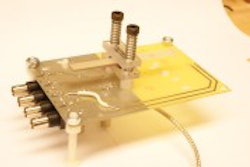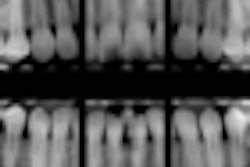Scientists at the University of Manchester have developed a camera that can be used to take 3D color x-ray images in near real-time without the need for a synchrotron x-ray source.
This method is often called hyperspectral imaging because it gives extra information about the material structure at each voxel of the 3D image, according to Robert Cernik, PhD, a professor of synchrotron radiation and materials science in the university's School of Materials. This extra information can be used to fingerprint the material present at each point in a 3D image.
For example, the system could be used to detect abnormal tissue types from biopsy samples, according to Cernik and his co-developers. It can also identify chemicals and compounds such as cocaine, precious metals, or radioactive materials even when they're contained inside a relatively large object such as a suitcase.
"Current imaging systems such as spiral [CT] scanners do not use all the information contained in the x-ray beam," Cernik stated in a university press release. "We can use all the wavelengths present to give a color x-ray image in a number of different imaging geometries."
As well as providing more information about the object being x-rayed, this technique also decreases the time it takes to create a 3D image, he noted. Rather than building up lots of separate images (mapping), the new system creates the image in one simple scanning motion, which currently only takes several minutes. This has implications for using the x-ray system for medical purposes, according to Cernik.
"The fact that the image can be taken at the same time as using more conventional methods and on the same timescale means more information can be gathered from biopsy samples," he said. "This will more accurately differentiate between normal and abnormal tissue types, reducing misdiagnosis."
Cernik is now seeking industrial partners for collaborative projects to refine the x-ray technology for specific applications, such as security, aerospace, and medical imaging.



















